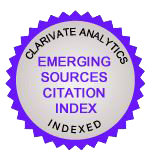Representation of Moravian Interests in Czechoslovakia After the Velvet Revolution
Keywords:
Moravia, nationalism, autonomy, elections, Movement for Self-Administrative Democracy – Society for Moravia and SilesiaAbstract
This text explores representation of Moravian interests which surfaced quite unexpectedly in Czech politics after the fall of the communist regime in November 1989. The text will first concentrate on the historical and territorial links between Bohemians and Moravians. The paper then briefly reviews the activities of the Moravian movement in 1968 to trace especially the post-November ’89 political manifestations of Moravism until the dissolution of Czechoslovakia at the end of 1992. The paper also analyzes key political structures of Moravism, especially the Movement for Self-Administrative Democracy – Society for Moravia and Silesia, their political successes and failures and interactions with Czech and Slovak political representatives especially in terms of territorial division of the state.Downloads
Downloads
Published
How to Cite
Issue
Section
License

CC BY-SA: This license allows reusers to distribute, remix, adapt, and build upon the material in any medium or format, so long as attribution is given to the creator. The license allows for commercial use. If you remix, adapt, or build upon the material, you must license the modified material under identical terms.
CC BY-SA includes the following elements:
BY ![]() – Credit must be given to the creator
– Credit must be given to the creator
SA ![]() – Adaptations must be shared under the same terms
– Adaptations must be shared under the same terms
Authors who publish with this journal agree to the following terms:
1. Authors retain copyright and grant the journal right of first publication with the work simultaneously licensed under a Creative Commons Attribution License that allows others to share the work with an acknowledgement of the work's authorship and initial publication in this journal.
2. Authors are able to enter into separate, additional contractual arrangements for the non-exclusive distribution of the journal's published version of the work (e.g., post it to an institutional repository or publish it in a book), with an acknowledgement of its initial publication in this journal.
3. Authors are permitted and encouraged to post their work online (e.g., in institutional repositories or on their website) prior to and during the submission process, as it can lead to productive exchanges, as well as earlier and greater citation of published work (See The Effect of Open Access).












